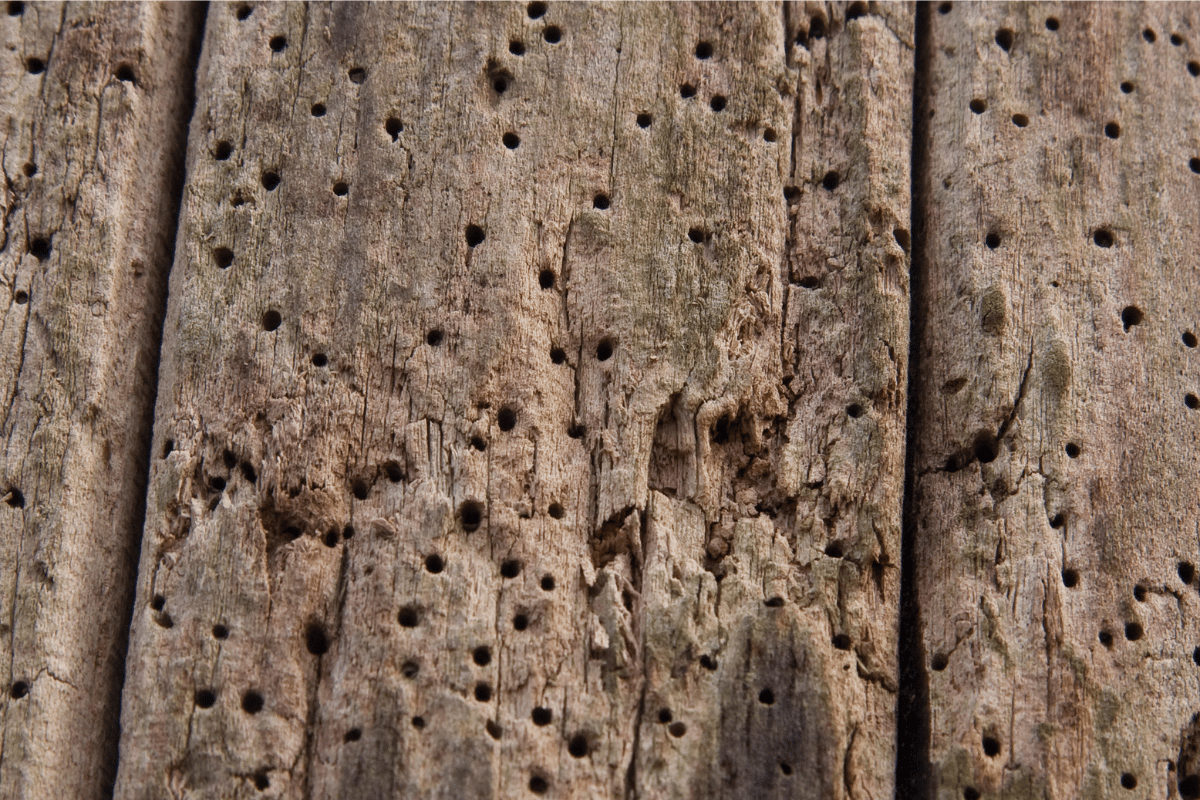An active woodworm infestation is one of the more destructive pest problems we regularly see. And it is definitely the most discreet of all the pest infestations. Woodworm insects have between a 2 to 5-year life cycle. And they spend most of that time eating away at the infested wood. Causing irreparable damage. Worryingly the life cycle of woodworm is almost always complete before most property owners are even aware they have this problem. Imagine how much damage the woodworm has caused in that time frame. And considering the beetle’s goal is to reinfest the wood before they die, it is vital that property owners know the signs of a woodworm infestation.
1. An active woodworm infestation causes fresh exit holes
Beetles boring out of the infested wood cause exit holes. These holes are typically round or oval and have shape edges. In some cases, exit holes are the most obvious sign of an active woodworm infestation. However, not in all cases. If the infested wood is in a high-traffic area, like the stairs in a house for example, then they would be hard to miss. It is easy to notice exit holes in these areas. Therefore, confirming the infestation. However, exit holes are useless in identifying active woodworm if they are in obscure places. Like in an attic for example. It is hard to know how new the holes are if the area isn’t regularly occupied. Therefore, simply discovering exit holes indicates there may have been an infestation at some point. But it does not definitively state there is an active infestation.
2. Finding live or dead beetles proves an active woodworm infestation
Discovering beetles (dead or alive) is a strong indication that a property is dealing with a woodworm infestation. Once the beetles exit the wood they only have days/weeks to live. And they use this time to mate and lay more eggs. If you suspect a woodworm infestation look around windowsills or near the infested timber. This is where you are most likely to find beetles. Dead or alive.
3. Damaged wood and bore dust
Woodworm larvae spend most of their life-cycle eating away at the infested timber. Therefore, damaged wood is an obvious sign of infestation. The larvae eats through the wood creating tunnels. We call these tunnels galleries. Early in the infestation process, these galleries may be hard to see. However, they are hard to miss with a more advanced infestation. Weak or crumbling wood is also an indication of this infestation. Additionally, so is frass. As adult beetles emerge from the wood, they create bore dust. Frass is the technical term for this dust. Frass is usually visible below infested timber. And is a sure sign of an active infestation.
Contact Ultimate Pest Control
Ultimate Pest Control provides fast, effective woodworm treatments. If you are having a problem with this destructive pest, contact us today!

